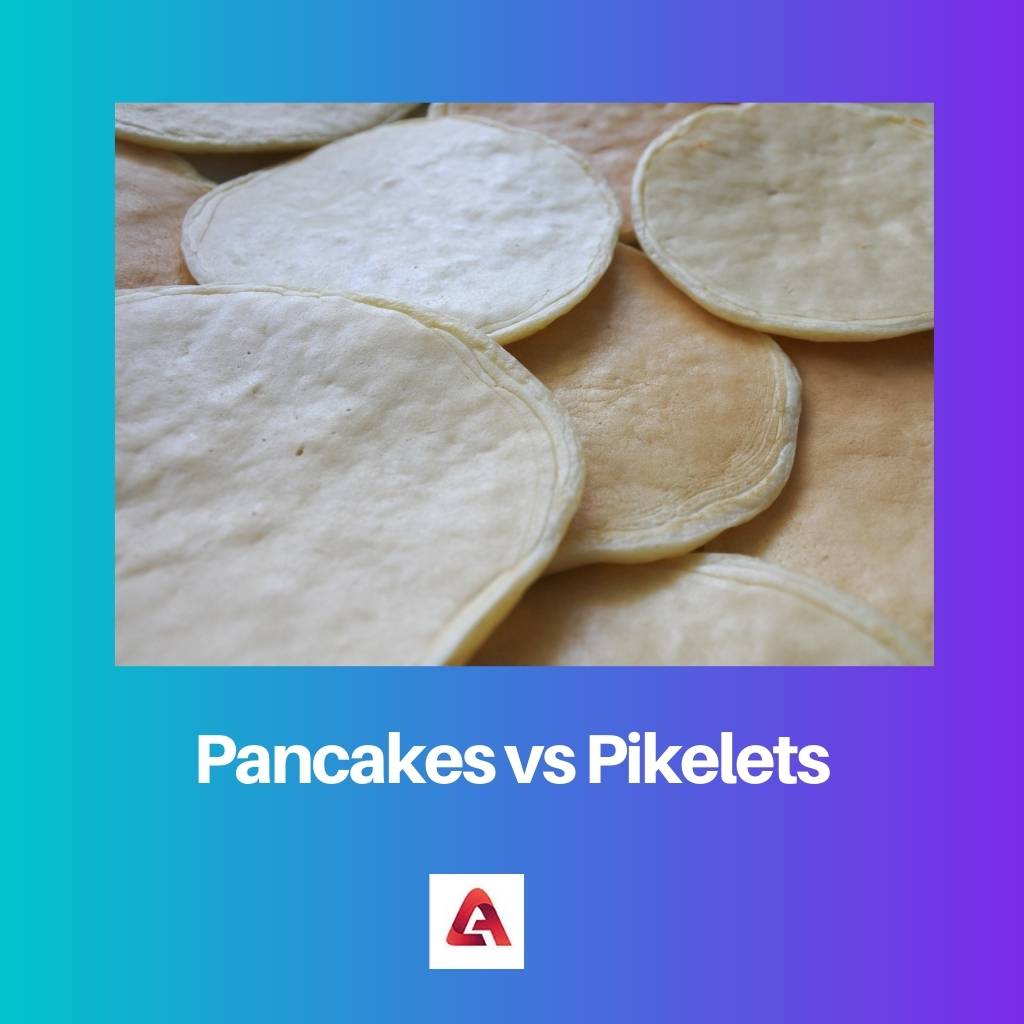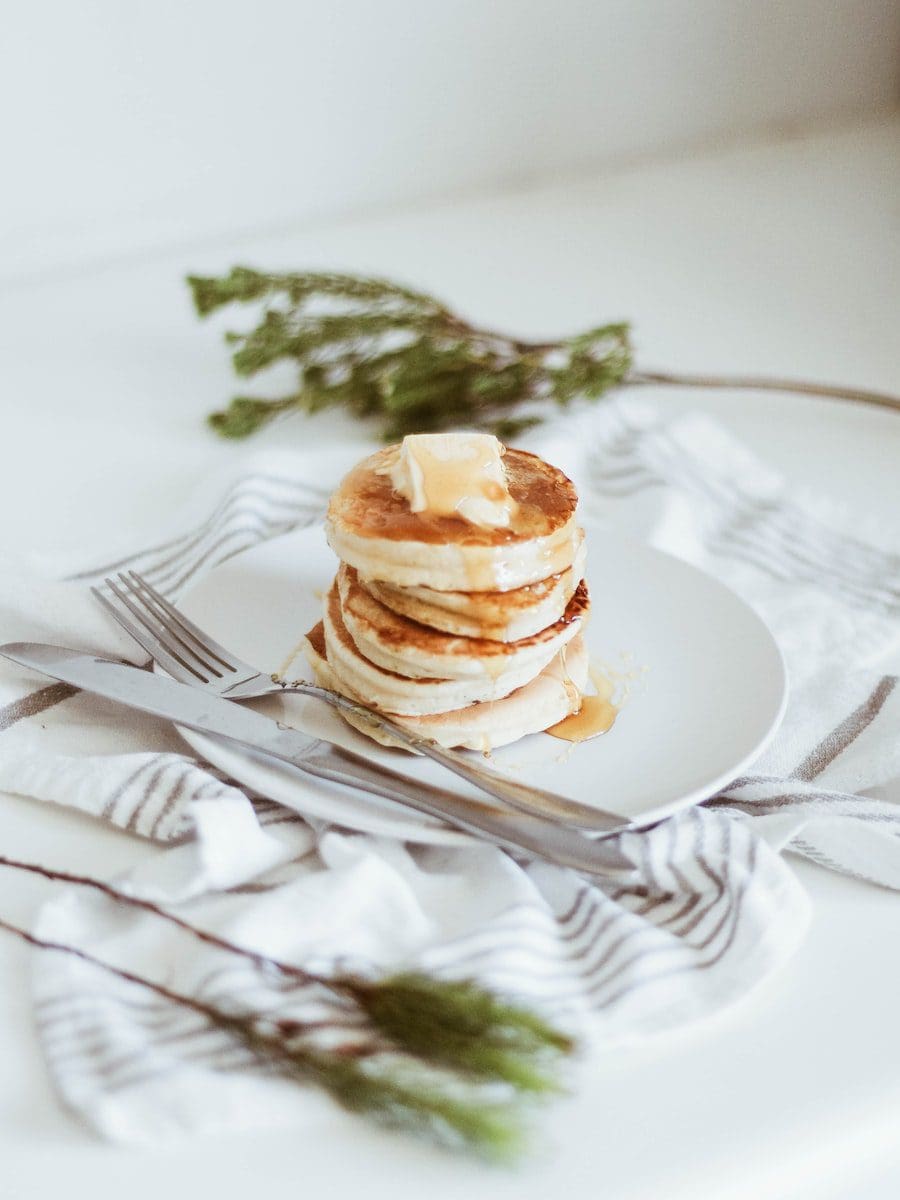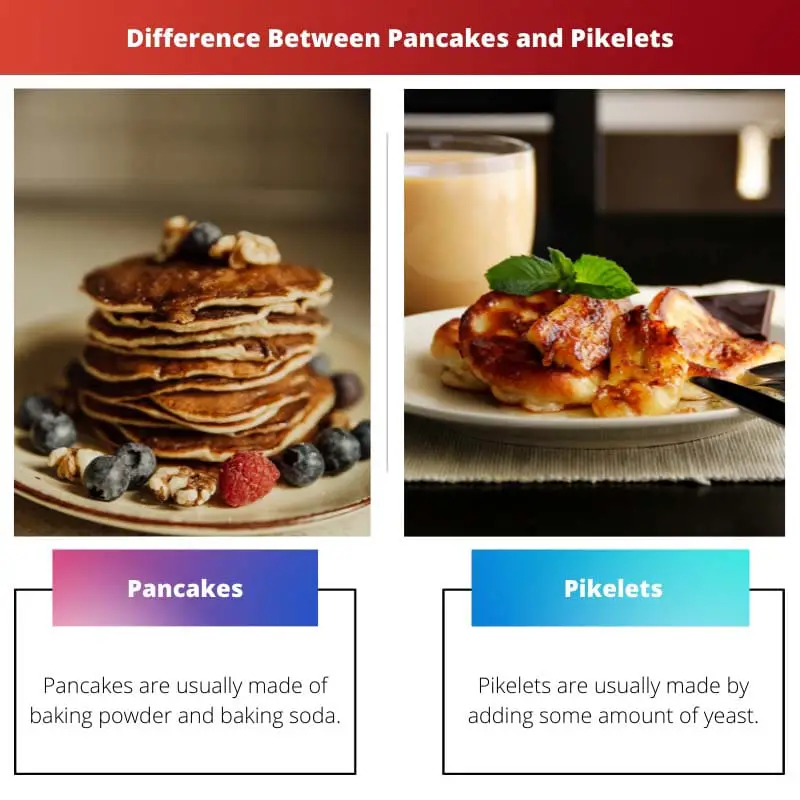Pancakes are a go-to option for breakfast, dinner, or even a snack, and we all love them. If you want an alternative to pancakes, then you might choose pikelets.
Anyone with a sweet tooth, or those who don’t enjoy sweets, will undoubtedly love this. Both these recipes are protein-rich and healthy too.
Key Takeaways
- Pancakes are flat cakes made from batter consisting of flour, eggs, milk, and a leavening agent such as baking powder.
- Pikelets are similar to pancakes but are smaller and thicker and include additional ingredients such as sugar or butter.
- The main difference between pancakes and pikelets is their size and thickness, with pikelets smaller and thicker than pancakes.
Pancakes vs Pikelets
Though the size of the pancake wholly depends on the person cooking it usually, pikelets are smaller than pancakes and are thicker. Due to this, pikelets are regarded as the smaller versions of pancakes.

Pancake is a round, flat, thick cake made with a batter containing starch, flour, eggs, milk, and sometimes even bananas.
It is a popular breakfast recipe worldwide because it takes very little time to prepare, and there aren’t any pre-preparations required, so that you can make it on the go.
A pikelet is a thicker version of the pancake that is fluffier. The diameter is much smaller than the pancakes and more diminutive than half the size of the enormous pancakes.
The reason for the difference is that the batter’s composition and texture vary based on the different combinations of ingredients used.
Comparison Table
| Parameters of Comparison | Pancakes | Pikelets |
|---|---|---|
| Size | Pancakes can be of different sizes up to 12 inches in diameter. | Pikelets are very small compared with a diameter of 3 or 4 inches. |
| Batter | It has a runny and lightly textured batter. | It has a thick, consistent, and heavy batter. |
| Serving | Pancakes are consumed both when they are hot as well as cold. | Pikelets are served when they are cold and seldom served hot. |
| Ingredients | Pancakes are made of baking powder and baking soda. | Pikelets are made by adding some amount of yeast. |
| Rise | Pancakes are fluffier and rise high due to the batter’s texture and baking soda’s presence. | Pikelets are thin and lighter in weight and do not rise as much as pancakes. |
What are Pancakes?
There are a plethora of varieties and recipes for pancakes. They may be made with several combinations and variations but remain mouth-watering.
In many places, pancake batters are also readily available, and the process requires much less time in this aspect. The recipe, the ingredients of the batter, and the size differ from place to place.
The recipe’s taste is enhanced by garnishing syrups, fruits, nuts, and a lot of toppings and fillings. It is neither the healthiest nor the junkiest. You can make it healthier by adding appropriate fruits and nuts.
There are many different types of pancakes, like potato pancakes, sweet potato pancakes, wheat pancakes, and so on.
Blueberry pancakes are more on tastier yet healthier options.
Surprisingly, flaxseed pancakes are also available and are super healthy and nutritious. To give additional protein and nutrition to your pancake, you can add greek yoghurt.
Based on the ingredients you use, pancakes provide a great source of calcium, protein, vitamins, and minerals.
If you are hesitant to use wheat flour or maida, you can choose healthier options like almond flour and coconut flour. To reduce the fat and calories, you can switch over to soya milk, almond milk, or coconut milk.

What are Pikelets?
One of the regional names for the crumpet is known as the pikelet. In Australia and New Zealand, pancakes are popularly known as pikelets. The common ingredient of a pikelet’s batter are eggs, flour, milk, and self-raising flour.
They are much smaller when compared with pancakes and are fluffier and less flat than pancakes.
Some popular topping of pikelets is honey, cream, curd, Nutella, syrups, and fruits. Butter is a common topping for pikelets. They are eaten when cold and eaten at any part of the day.
Usually, people like to have it only with butter for their lunch and nothing else.
Pikelets are heavier and fuller than pancakes. One cannot have the same amount of pancakes and pikelets. A small quantity can do good. Conventionally the diameter of the pikelets is 3 to 4 diameters in size.
It is also popular in countries like Scotland and Britain.
There are several varieties of these pikelets and more than 200 recipes for a pikelet. This is one of the recipes that has been prevalent since ancient times but shrill liked and enjoyed by people of all ages.
While preparing this, the pikelet rises and becomes fluffier due to the presence of baking powder and baking soda.

Significant Differences Between Pancakes and Pikelets
- Pancakes are larger than pikelets.
- Pancakes are made up of a runnier batter in terms of consistency, whereas the batter of pikelets is thicker inconsistency.
- Pancakes are eaten hot and cold, but pikelets are eaten only when cold.
- Yeast is not added in pancake batter, but for pikelets, the better consists of yeast.
- Pancakes do not rise as high as the pikelets do while cooking.




